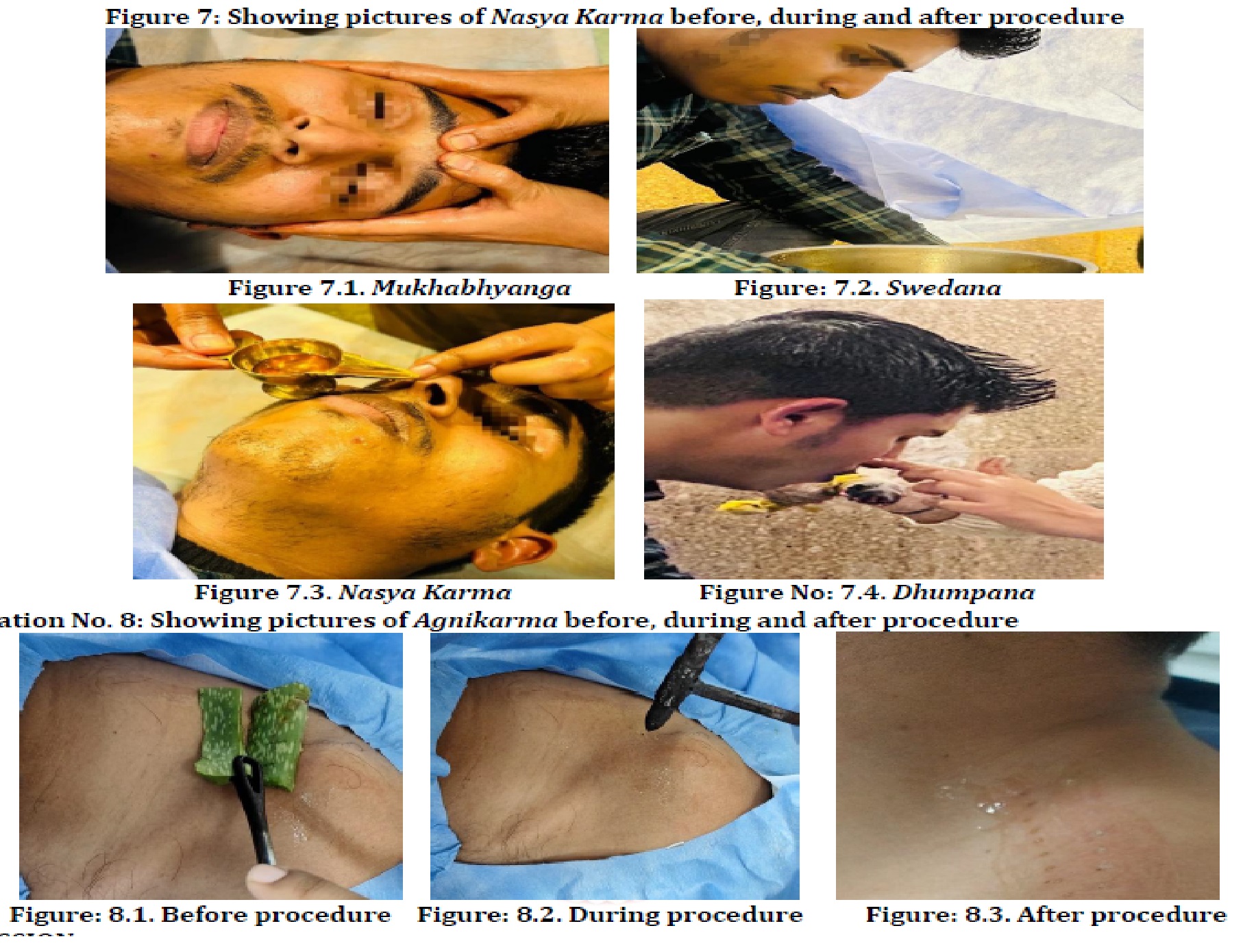Comparative Study to Evaluate the Efficacy of Mahamasha Taila Brihana Nasya and Agnikarma in Treatment of Avabahuka (Frozen Shoulder)
DOI:
https://doi.org/10.47070/ayushdhara.v10i6.1450Keywords:
Avabahuka, Frozen shoulder, Panchakarma, Nasya, AgnikarmaAbstract
Avabahuka is a disease which is classified under the broad spectrum of Vata Vyadhi in classical texts which hampers the day-to-day activities of an individual as Vata Dosha is responsible for all the movements of the body. Avabahuka is a disease which affects shoulder joint in which Vata localized in the region of shoulder upon getting aggravated, dries up the ligaments of shoulders and constricts the Sira present there. Due to resemblance in clinical manifestations, Avabahuka can be compared with frozen shoulder (Adhesive capsulitis). Prevalence of frozen shoulder is 2-5% in general population. Women are generally affected more than men. Aim: To study the efficacy of Mahamasha Taila Brihana Nasya in Avabahuka (frozen shoulder) in comparison to Agnikarma. Objective: To compare the efficacy of Mahamasha Taila Brihana Nasya and Agnikarma in Avabahuka (Frozen shoulder). Methods: An open label, randomized, interventional and comparative clinical trial. In Group A, 2 sessions of 7 days each with a gap of 7 days between them where a dose of 8 Bindu Mahamasha Taila Brihana Nasya in each nostril was administered. In Group B, total 3 sittings of Agnikarma were given on same day of every week and in Group C, both Mahamasha Taila Brihana Nasya and Agnikarma were administered. The record of assessment was taken at 0, 7, 14, 21 and 28 days. Result: The reduction in the severity of symptoms was statistically analysed and highly significant improvement was found in all the patients. Conclusion: All the three groups were having statistically significant result in the parameters i.e., VAS score, SPADI score and ROM goniometric examination. But in inter group comparison, combined therapy (Nasya and Agnikarma) was found to be more effective than individual therapy.
Downloads

Downloads
Published
Issue
Section
License
Copyright (c) 2023 AYUSHDHARA

This work is licensed under a Creative Commons Attribution-NonCommercial-ShareAlike 4.0 International License.


